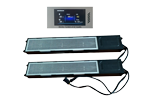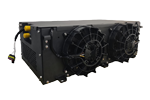Efficient Battery Thermal Management Systems (BTMS) for New Energy Vehicles (NEVs)
As the world shifts toward energy conservation and emission reduction, the automotive industry is gradually phasing out internal combustion engines. New Energy Vehicles (NEVs), powered by renewable energy sources, are emerging as the sustainable alternative to fossil fuel-powered vehicles. Among the various energy storage solutions, lithium-ion batteries (LIBs) stand out due to their high energy/power density, long cycle life, and environmental friendliness, making them the most promising energy storage devices for NEVs, including Hybrid Electric Vehicles (HEVs) and Battery Electric Vehicles (BEVs).
However, the commercialization of NEVs faces a fundamental challenge: energy storage. Developing suitable energy storage systems that deliver high power and energy is critical. To meet the power and energy demands of NEVs, lithium-ion batteries are connected in series/parallel to form modules and packs. Yet, LIBs are sensitive to stress, vibration, and temperature, with temperature having the most significant impact on their performance. For instance, low temperatures reduce the power and energy output of LIBs, while high temperatures trigger complex side reactions that can lead to thermal runaway (TR) under extreme conditions. Uneven temperature distribution within battery systems further exacerbates electrochemical imbalances, severely affecting the performance of NEVs.
To address these challenges, a reliable and efficient Battery Thermal Management System (BTMS) is essential to maintain battery temperatures within the optimal range. An ideal BTMS should regulate battery packs to their ideal temperature while adding minimal weight and cost. Extensive research has been conducted on BTMS, which can be categorized into active or passive systems, series or parallel configurations, heating or cooling methods, and air-, liquid-, or phase change material (PCM)-based solutions, as well as hybrid strategies combining multiple approaches. The design of a BTMS significantly impacts the cost, heat transfer, energy management, battery health, and energy density of the battery system.
As the future of NEVs aims for faster charging and longer driving ranges, the importance of BTMS will only grow. This article provides design guidelines for efficient BTMS implementation in high-energy-density lithium-ion batteries for NEVs. We first discuss the impact of temperature on individual cells and battery systems, then highlight advancements in air cooling, liquid cooling, and PCM-based cooling systems, summarizing their advantages and limitations. Additionally, we explore the integration of BTMS with Vehicle Thermal Management (VTM) and discuss the challenges and future prospects of BTMS with thermal runaway prevention capabilities.
Why Choose Our BTMS Solutions?
Our BTMS solutions are designed to address the critical thermal management needs of lithium-ion batteries in NEVs. By leveraging advanced cooling technologies such as liquid cooling and PCM-based systems, we ensure:
- Optimal battery performance within the 15–35°C "comfort zone."
- Prevention of thermal runaway and safety hazards.
- Enhanced battery lifespan and energy efficiency.
- Seamless integration with vehicle thermal management systems.
With the increasing demand for high-performance NEVs, our BTMS solutions offer a reliable, efficient, and cost-effective way to maximize battery performance and safety. Contact us today to learn how our cutting-edge BTMS can power the future of sustainable transportation!









.png)






